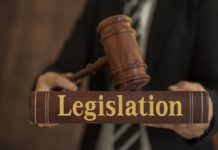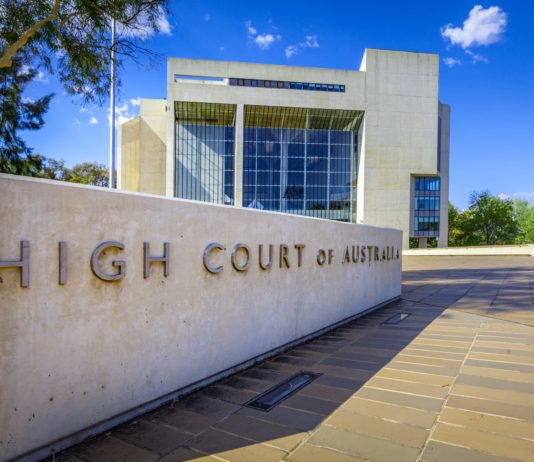Must AAT consider information considered by previous AAT?
Federal Court. If a decision-maker first states its conclusion and then talks about the evidence concerning that conclusion, does that indicate the decision-maker made the conclusion without considering that evidence? Does s 416 require AAT to refuse to consider the information that was before a previous AAT, or to have regard to the previous AAT's decision, or to take it to be correct? Can AAT adopt or accept the conclusion or the process of reasoning of a previous AAT in whole or in part?
Can decision-makers use common knowledge?
Federal Court (Full Court). In deciding not to revoke under s 501CA(4) the mandatory cancellation of Appellant's visa, Minister found that, in American Samoa and Samoa: English was widely spoken; Appellant and his family would have access to health and welfare services. Could Minister base those findings on common knowledge? Were they so based? Does the materiality test involve a court asking itself whether, in the absence of the error in question, the administrative decision-maker would have made a different decision? In the context of s 501CA(4), does the materiality test involve a balancing or a binary exercise?
Fraud “on” visa applicant: what must be proved and by whom?
Federal Court. When a visa applicant alleges fraud on the part of a representative in the lodgement of a visa application so as to establish that the application was invalid and thus avoid issues with s 48 and PIC 4020, what has to be proven and who bears the onus of proof?
Best interests of children a primary consideration?
Federal Court. If the parties to litigation agree on a principle, is that principle's precedential force diminished? Further, in Vaitaiki, Teoh was interpreted by: Burchett J as requiring decision-makers to take the best interests of children into account as a primary consideration if no notice to the contrary was given; Branson J as requiring decision-makers to treat those interests as a primary consideration. Is the error discussed in Teoh better characterised as one going to procedural fairness or as a failure to take into account a relevant consideration? If the former: is the procedural fairness obligation discussed in Teoh either subsumed within s 425 or not a matter dealt with by Div 4 of Pt 7 of the Act; should the FCA adopt Burchett J's or Branson J's interpretation of Teoh?
AAT required to conduct hearings in person?
Federal Court. Does FCA have jurisdiction to review a delegate's decision to refuse under s 501CA(4) to revoke the mandatory cancellation of a visa made under s 501(3A)? Can the self-represented Applicant's notice of appeal from the Minister's decision be treated, in substance, as: a notice of appeal from the Tribunal's decision; including an application for a time extension under s 477A(2)(a)? How should the FCA approach poorly-cast grounds of judicial review? Is the Tribunal required to conduct hearings in person?
Released from a detention centre due to covid-19 risks
Federal Court. Court ordered that Minister cease to detain the applicant at the Melbourne Immigration Transit Accommodation centre (MITA) due to the risk of covid-19 entering the MITA and then infecting the applicant. In practical terms, this means Minister will need to place applicant at a different detention centre.
s 501CA(4): when does time for making representation start to run?
Federal Court. s 501CA(3)(a) required Minister to notify non-citizen that visa had been mandatorily cancelled under s 501(3A). s 501CA(4)(b) required Minister to invite non-citizen to make representations seeking revocation of visa cancellation within period prescribed by regulations. Reg 2.52 set out a period of 28 days after the person is given the notice and the particulars of relevant information under s 501CA(3)(a). When do 28 days start to run? Minister gave notice & made invitation on 22 Jun 2017, but Applicant only made representations on 4 Sep 2017. On 11 April 2019, DHA emailed the Applicant a personal circumstances form, giving him 28 days to respond. Did that email constitute a fresh invitation such as to recommence the running of time and re-enliven the Minister’s power? Can Minister consider late representations
Apprehended bias: must material be irrelevant?
Federal Court. In CNY17, HCA decided that material placed by Secretary before IAA was prejudicial, causing a reasonable apprehension of subconscious bias. Here, Minister placed before AAT convictions of sexual offence against a minor and police materials relating to allegations of sexual offence against another minor, for which Applicant was acquitted. Was it essential to the conclusion in CNY17 that the prejudicial material was irrelevant? If so, were the police materials irrelevant on the basis that: para 13.1(2) of Direction No 79 "expressly or impliedly limited to conduct in which the non-citizen has been found to have engaged by reason of having been convicted of a criminal offence"; or that the AAT could not "go behind and impugn the acquittal"?
Materiality: is question whether decision was inevitable?
Federal Court. Is the materiality test question whether the result, in the absence of error, was inevitable? In assessing materiality, would a court be usurping the statutory task entrusted to the decision-maker if it formed its own view as to what the result should have been in the absence of error?
Can AAT assess risk to community in advance?
Federal Court. Due to s 500(6L), AAT had 84 days to decide under s 501CA(4) whether to revoke the mandatory cancellation of Applicant's visa. At the time of AAT's decision, Applicant still had about 6 years of imprisonment to serve. Could AAT make a legally reasonable decision about the risk the Applicant would present to the community upon release 6 years in advance? Did AAT have "power to remit the application with a direction, or recommendation, that a decision concerning the application for revocation of the cancellation of the Applicant’s visa be deferred until closer to the time of his release from imprisonment"?





















